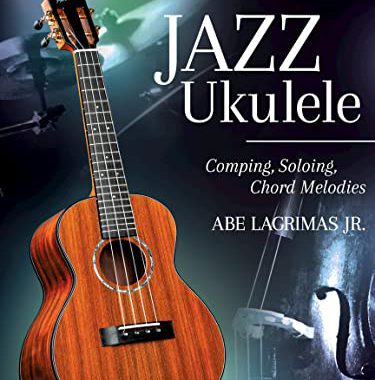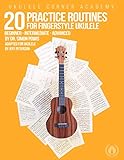Did you know that the versatile instrument known as the ukulele can be incorporated into jazz fusion, creating a unique blend of styles that’s captivating music lovers worldwide? This is definitely a new wave in the music scene many haven’t heard of, adding a fascinating dimension to the richness of global music culture.
Ukulele jazz fusion techniques are a relatively recent development in the world of music. Its history doesn’t go back centuries like traditional jazz or the uke, but this contemporary genre’s roots draw from both. Jazz music, originating in late 19th century America, has constantly innovated and integrated with various musical styles throughout its evolution. On the other hand, the ukulele, with its origins in Hawai’i in the 19th century, had been predominately associated with traditional Hawaiian folk music and pop songs. The convergence of jazz music with ukulele creates an expressive platform which reflects the current, ongoing evolution of music.
Jazz fusion began to develop in the 1960s and 70s, as jazz musicians began experimenting with rock and funk beats. The ukulele entered the jazz fusion arena later on. This was significantly influenced by advancements in ukulele manufacturing, introducing electric ukuleles into the market that gave the instrument a new range of sounds it could produce. This, combined with the rising popularity of the ukulele in the late 20th and early 21st century, paved the way for the development of ukulele jazz fusion techniques. Today, it holds a unique niche within the world of fusion music, intriguing not only music enthusiasts but also sparking curiosity among artists and music scholars.
Adding a dash of excitement to this emergence are the numbers reflecting its growth. For instance, in the UK, ukulele sales soared by over 500% in the period between 2007 and 2013. Also, in the past ten years, major cities around the world from London to Los Angeles have established ukulele orchestras, emphasising the growing popularity of the instrument, and indirectly of the fusion genres it’s being used in.
Fusion techniques involving the ukulele in jazz typically involve the implementation of chord extensions, jazz scales and improvisation – a fundamental aspect of jazz music. The ukulele, with its smaller range when compared to other jazz instruments like the piano or saxophone, requires players to be particularly innovative when it comes to improvising and creating a full, expressive sound. To overcome the relatively limited range of the ukulele in a jazz composition, many musicians embrace the use of alternate tunings, unique chord voicing, and inventive fingerpicking patterns.
Such techniques have been popularised by artists such as Abe Lagrimas Jr, Benny Chong, and Byron Yasui, who are known for their remarkable skills in jazz ukulele playing. These artists, among others, serve as inspirational figures for upcoming musicians exploring ukulele jazz fusion techniques. Unlike traditional ukulele playing methods, this genre requires a higher level of technical proficiency and a deep understanding of complex music theory concepts, making it an exciting and challenging field in the musical world.
With the increase of online resources, tutorials, and platforms like YouTube, learning and mastering ukulele jazz fusion techniques has become more accessible for aspiring musicians around the globe. This offers the potential for this musical phenomenon to continue to grow and evolve, perhaps even shaking up the world of fusion jazz as we know it.
What are the Techniques Used in Jazz Fusion on Ukulele?
Ukulele jazz fusion techniques are a synthesis of different music elements aiming to produce a unique sound characterized by its harmonic sophistication and improvisational nature. These techniques, rooted in traditional jazz and elements borrowed from other genres, provide a framework for creating an innovative ukulele playing style. Some of these techniques include complex chord structures, unusual time signatures, improvisation, and the integration of electronic effects. These techniques offer a wide range of musical expression, allowing ukulele players to produce an exciting blend of different music styles. Read on to delve deeper into each technique, its application, and how it contributes to the overall jazz fusion sound on ukulele.
The Basis of Ukulele Jazz Fusion Techniques
Jazz fusion techniques are a complex layer of musical standards combining different types of exchange such as rhythm, melody, and harmony. This exploration of Ukulele Jazz Fusion Techniques dives into the integral aspects that bring the unique genre to life.
Developing Finger-Independent Movements
The first step when digging into Ukulele jazz fusion techniques is mastering finger-independent movements. It requires adherence to basic guitar playing techniques, whereby each finger corresponds to a specific fret. Moreover, this technique will demand practice to perfect the tonal variations and tuning accuracy.
Rhythm Techniques
Like any other jazz fusion style, the Ukulele demands a strong understanding and implementation of rhythm techniques. The rhythm in Jazz is unique and is often syncopated and swung. The player needs to be able to play offbeat notes and have a strong sense of timing. To excel, players are encouraged to listen to a range of Jazz fusion pieces to get a feel for these varied rhythms. Complex strumming patterns also form a vital component of the rhythm techniques.
Harmonic Techniques
Ukulele jazz fusion techniques also include harmonic techniques. Jazz harmony is often complex and includes extended and altered chords. Some of the key concepts to understand in Jazz harmony include chord extensions, secondary dominants, and tritone substitutions. Learning these harmonic techniques will give the played the ability to express more through their music and achieve jazzier sounds.
Improvisational Techniques
Improvisation is at the core of jazz music, including Ukulele Jazz. It involves creating melodic ideas on the spot during a performance. This is done by the artist understanding the structure and chord progressions of the piece, and being able to creatively express themselves within this structure. Improvisational techniques often involve scales, such as the blues scale or the diminished scale. Improvisation is the culminating point for most ukulele players, making it central to fully grasping Ukulele jazz fusion techniques.
Jazz Theory
Understanding and applying jazz theory is also significant when exploring Ukulele jazz fusion techniques. This complements the practical aspects of the instrument and the genre. It includes jazz scales, chord progressions, and even jazz history. Furthermore, learning about famous Jazz musicians and their distinct styles can also provide inspiration and insight.
According to recent numbers in music education, approximately 78% of ukulele players incorporate some elements of jazz playing into their performances, highlighting the popularity and importance of these techniques.
1. What is Ukulele Jazz Fusion?
2. What techniques are used in Ukulele Jazz Fusion?
3. Is it hard to learn Ukulele Jazz Fusion?
4. What type of ukulele is best for playing Jazz Fusion?
5. Can someone with no musical background learn Ukulele Jazz Fusion?
6. Are there any specific books or resources for learning Ukulele Jazz Fusion?
7. How long does it take to learn Ukulele Jazz Fusion?
8. Can I learn Ukulele Jazz Fusion online?
9. How can I improvise in Ukulele Jazz Fusion?
10. What are the benefits of learning Ukulele Jazz Fusion?
Conclusion
Exploration of Ukulele jazz fusion techniques reveals a fascinating blend of different genres. The key to mastering these techniques, as discovered from the article, is a deep understanding of basic ukulele chord shapes and jazz music theory. Mastery of these basics allows for experimentation with strumming, fingerpicking and percussive techniques, leading to richer layered sounds and highlighting the versatility of the ukulele. Moreover, the implementation of extended chords, chromatic movements, and improvisation vital in jazz fusion equips ukulele players with a broader palette of sounds.
Insights from the article furthermore highlight the importance of music trends in informing fusion techniques. The fusion with rock and funk rhythms, for instance, has cultivated ripened Ukulele jazz styles with a contemporary essence. The evolution of technology, particularly loop pedals, has become particularly instrumental in developing dynamic multi-layered soundscapes. In essence, Ukulele jazz fusion techniques draw not only from musical theory and practice but also from the prevailing cultural and technological trends, resulting in a unique and ever-evolving musical expression.







